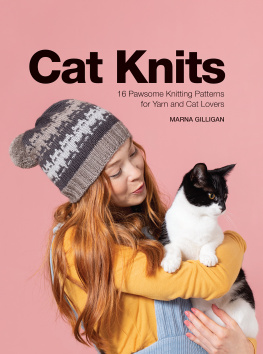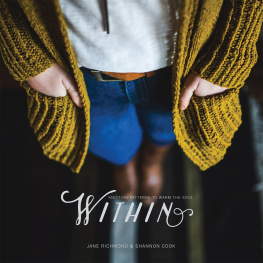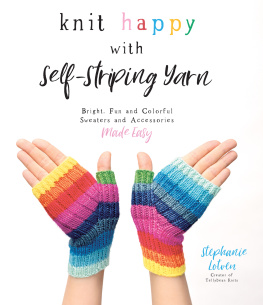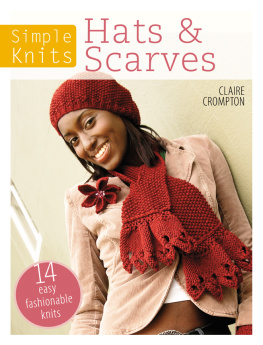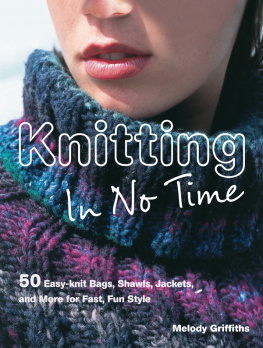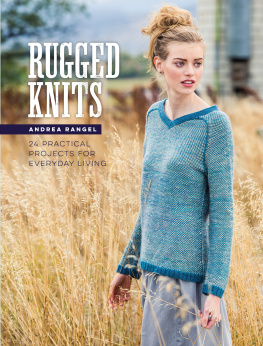Contents
Guide
Cat Knits
16 Pawsome Knitting Patterns for Yarn and Cat Lovers
MARNA GILLIGAN

www.davidandcharles.com
Contents
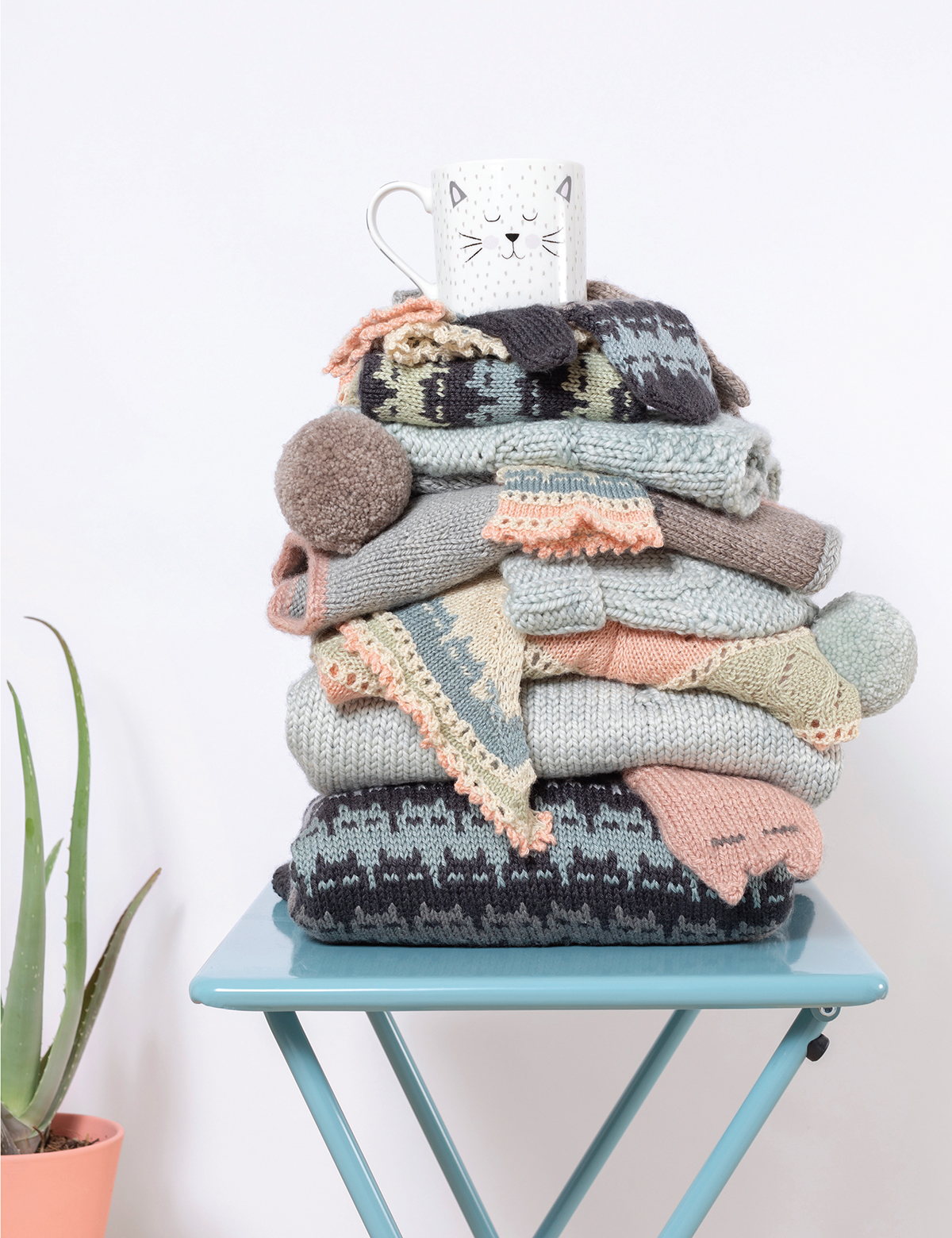
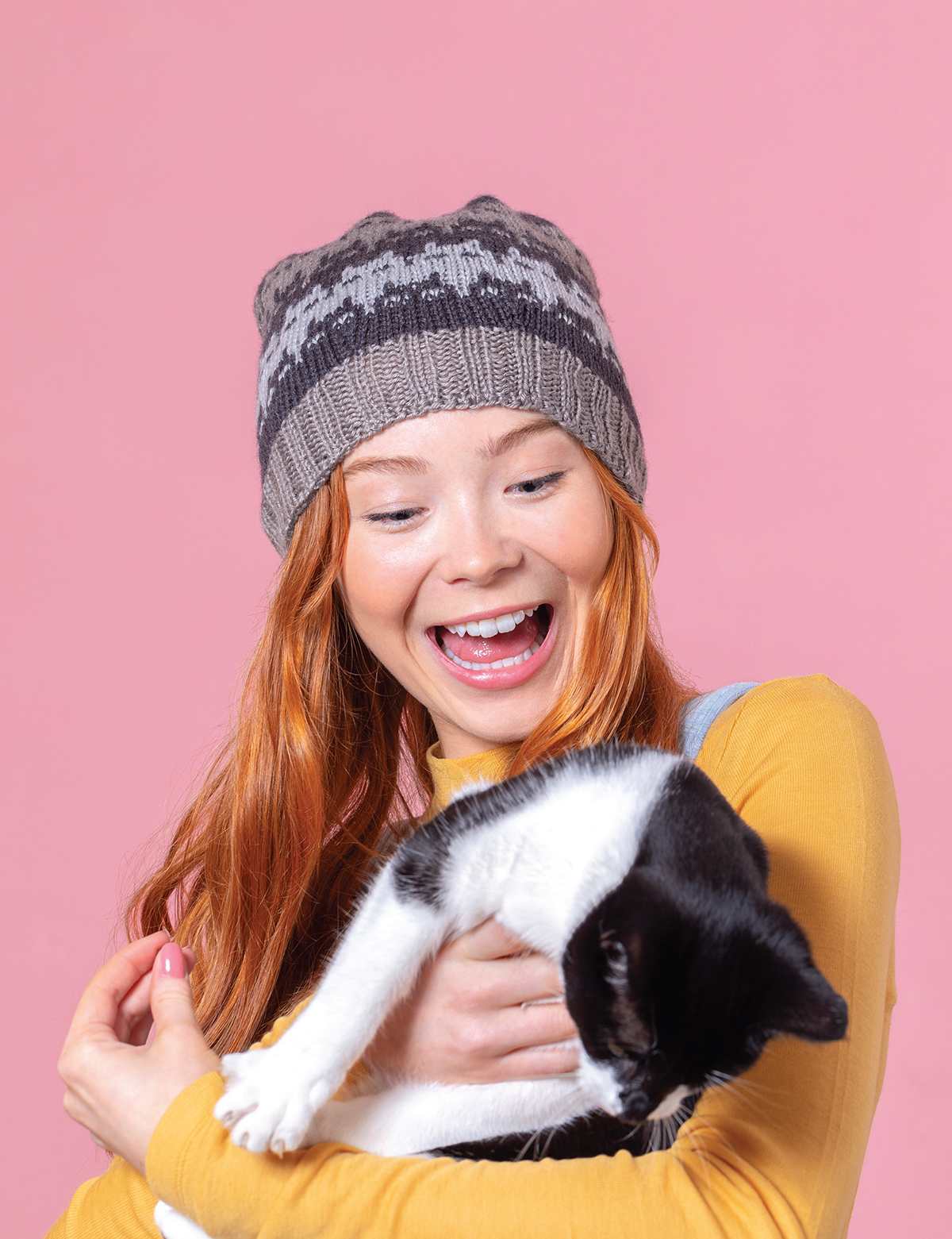
Introduction
Welcome to Cat Knits! My completely unscientific survey says that there are many cat-loving knitters and quite a few knitting and yarn loving cats. This book should keep everyone happy; lots of quirky, catty knits for the knitters means lots of knitting on the needles, and full knitting needles means plenty of yarn to chase and knitting to nest on for those cats.
Each section of this book uses a different technique spread over four patterns three accessories and a cardigan or sweater. If youre new to or nervous of that technique you can work your way up to a garment, via accessories, building your skills and confidence, and getting some quick catknitty gratification as you go.
I had a lot of fun dreaming up more ways to put cats on knitting, and my cats had a fine time helping me to knit it all up. I hope you and your feline friends have just as much fun with this book.

Needles and tools
NEEDLE SIZES
Needles have been listed in metric sizes for the projects in this book. If youre used to using US sizes, a conversion chart has been provided here for your reference:
| METRIC SIZE | US SIZE |
|---|
| 2.75mm | 2 |
| 3mm | - |
| 3.25mm | 3 |
| 3.5mm | 4 |
| 3.75mm | 5 |
| 4mm | - |
| 4.25mm | 6 |
| 4.5mm | 7 |
| 5mm | 8 |
| 5.5mm | 9 |
| 6mm | 10 |
| 6.5mm | 10.5 |
| 7mm | - |
| 7.5mm | - |
| 8mm | 11 |
| 9mm | 13 |
The cable lengths used for circular needles are 40cm (16in), 60cm (24in) and 80cm (32in).
STRAIGHT OR CIRCULAR NEEDLES
While a few of the projects in this book can be knit on straight or circular needles, youll need to use circular needles for anything knit in the round.
The shawls have so many stitches towards the end that they wont fit comfortably on straight needles, although you can, if you prefer, start with straight needles and switch to circular ones later.
SMALL-CIRCUMFERENCE KNITTING
Gloves, hat crowns and sleeves, when knitted in the round, all need small circumference needles. There are a lot of options, and no one right option. I use a mixture of flexible DPNs, regular DPNS (for hat crowns and mitten tips) and tiny circulars (on stranded colourwork these really help me to keep my tension even). Use the method or methods you prefer.
Double-pointed needles (DPNs)
These are sets of four or five needles. The stitches are spread across three or four of them, and the remaining needle does the knitting.
Pros: You can look very impressive knitting with so many needles at once! Plus, you have three or four natural break points in your knitting, which can cut down on the need for stitchmarkers, and make projects like hat crowns much easier.
Cons: Knitting on DPNs can be a bit like wrestling with a hedgehog, and you look less impressive when poking yourself with your knitting. Repeatedly. DPNs are also prone to leaving a larger gap at the transitions between needles.
Tip: Ladders between needle changes can be reduced by using five, rather than four, needles, tugging the second stitch on each needle tightly, and by changing the starting point on each needle occasionally.
Magic loop
Magic loop uses a longer length circular needle (often 100cm/40in or more) doubled around itself to create a loop that sits to the side of the work in progress.
Pros: No need to get more needles; the circular needles youve been using for the rest of the project can be used for magic loop. If youre knitting on the go its very easy to secure your stitches.
Cons: Constantly stopping to rearrange the cable can disrupt your happy knitting rhythm.
Tip: A very flexible cable makes magic loop much, much easier.
Two circular needles
This is similar to magic loop, but using a second needle instead of making a loop.
Pros: Again, no need to buy extra needles and although you do need two, they dont need to be the same length.
Cons: WIth four needle tips on the loose it can be easy to knit with the wrong one.
Tip: Using needles with different coloured cables can help avoid mixing them up and knitting onto the wrong needle.
Tiny circular needles
These are very short circular needles.
Pros: No faffing about with extra loops of cable or many needles you can just knit around and around.
Cons: The tiny needles can be difficult to grip.
Tip: Use the longest tiny needle thats still small enough for your project; that extra centimetre or two of grippable needle can be the difference between happy and sad hands.
Flexible DPNs
These are double pointed needle with a flex in them. The stiches are divided between two needles, and you knit around with a third.
Pros: Speedy, but without the hedgehog-wrestling experience of DPNs.
Cons: These are quite expensive, and not very common (yet).
Tip: Like DPNs, gaps in the space between needles can be a problem. Tugging the second stitch, and changing the transition point can help.
TOOLS
Crochet hook
A couple of crochet hooks are an essential part of the knitters toolkit. Theyre very useful for catching the occasional dropped stitch, making a provisional cast on, and weaving in ends, as well as reinforcing a steek.
Tapestry needle
For weaving in ends, attaching buttons, and seaming up your knits. The blunt tip helps avoid splitting the yarn youre weaving into.
Stitchmarkers
Stitchmarkers can help keep track of your knitting. Place them onto your needle to identify the beginning of your rounds, mark the place where youll be working decreases or increases, and to keep track of lace repeats. It can help to have markers of a few different styles youll often have both end of round and decrease/ increase points, and using different markers for each of these minimises mix-ups. Pretty stitchmarkers also add a little excitement to your knitting.
Locking markers or bulb pins
These hook onto a stitch, rather than the needle. Pop one onto the stitch you make after every sleeve increase or decrease, and youll be able to see at a glance the number of increases or decreases youve worked and quickly count back the rows since your last decrease. Theyre also excellent for marking short row turns and for securing a dropped stitch until you can pick it up.

